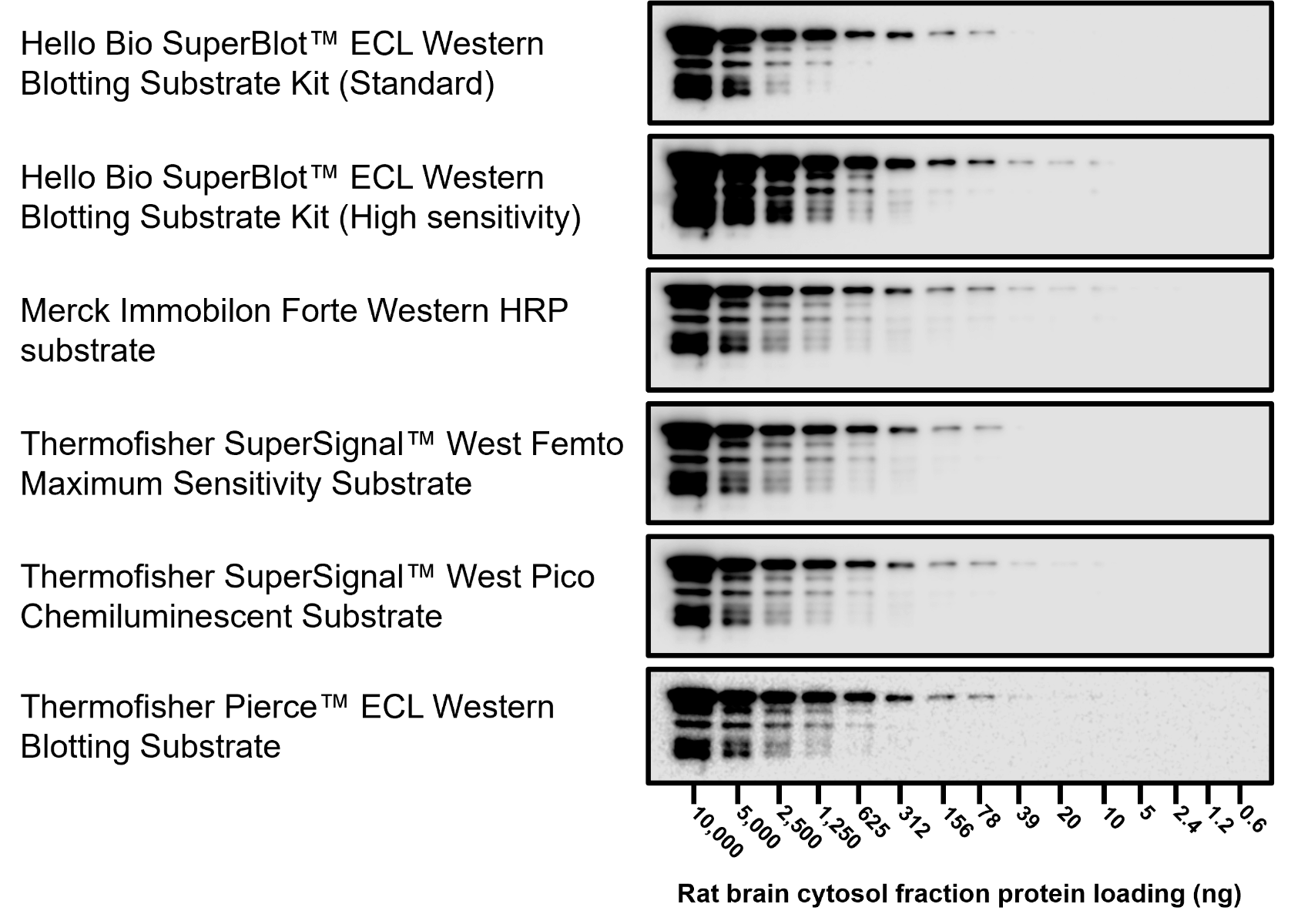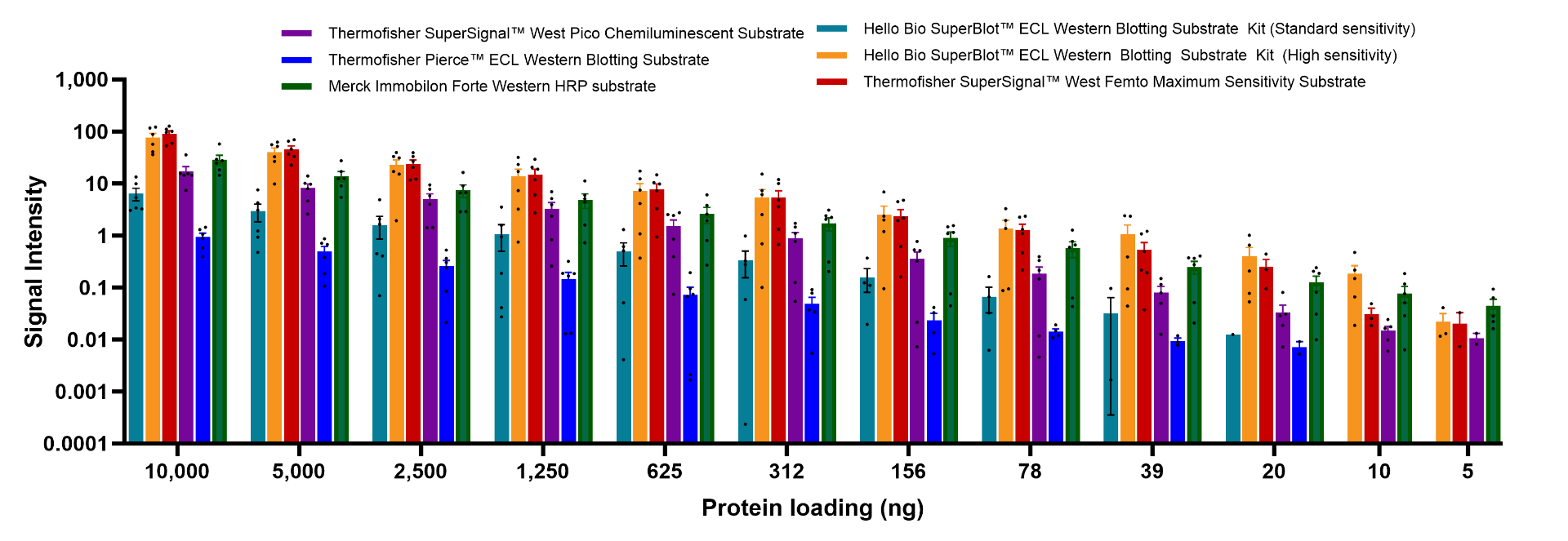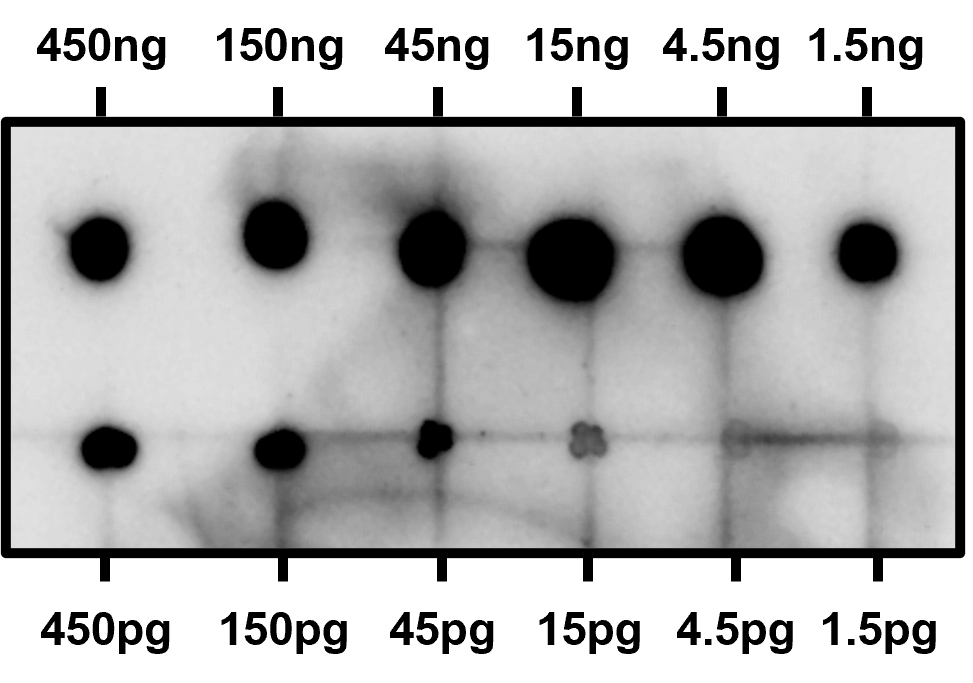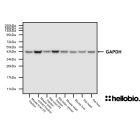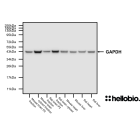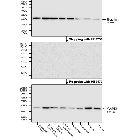SuperBlotTM ECL Western Blotting Substrate Kit (High sensitivity)
Certificate of Analysis
Product overview
| Name | SuperBlotTM ECL Western Blotting Substrate Kit (High sensitivity) |
| Biological description | OverviewHello Bio SuperBlotTM ECL Western Blotting Substrate Kit (High sensitivity) is a high performance enhanced chemiluminescent (ECL) substrate suitable for Western blotting of low abundance proteins in complex mixtures with horseradish peroxidase (HRP) conjugated secondary antibodies. Key FeaturesSensitivity: Equivalent to ThermoFisher SuperSignal™ West Femto Maximum Sensitivity Substrate SuperBlotTM ECL Western Blotting Substrate Kit (High sensitivity) produces an excellent signal/noise ratio with low background to produce publication quality Western blots. NotesWe recommend:
|
| Customer comments | Works beautifully, as always with any Hello Bio product! We tested this ECL Western Blotting substrate kit and it works marvelously. We get comparable result to our previous supplier's kit and are committed to switching to Hello Bio products for our ECL WB. Thank you Hello Bio as always for a wonderful product! Verified customer, Aston University I used your ECL solution for a trial and it worked well on my blots, I liked it! Less background and less incubation time which was great. Verified customer, University of Bristol |
| Description | High sensitivity ECL solution for developing chemiluminescent Western blots |
Images
Biological Data
| Application notes |
Protocol for Chemiluminescent blot development with ECLDigital Imaging
Film Imaging
|
Solubility & Handling
| Storage instructions | +4°C (protect from light) |
| Storage buffer | Contains 0.05% ProClin-300 |
| Storage of solutions | Prepare and use solutions on the same day if possible. Store solutions at -20°C for up to one month if storage is required. Equilibrate to RT and ensure the solution is precipitate free before use. |
| Shipping Conditions | Stable for ambient temperature shipping. Follow storage instructions on receipt. |
| Important | This product is for RESEARCH USE ONLY and is not intended for therapeutic or diagnostic use. Not for human or veterinary use. |
-
Novel microneedle patches for transdermal delivery of AP39, a hydrogen sulphide donor, in the treatment of scenarios mimicking neurological disorders
Balakrishnan et al (2024) Journal of Pharmaceutical Investigation : https://doi.org/10.1007/s40005-024-00711-9





